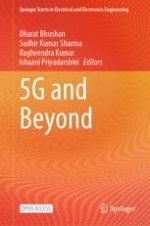This open-access book aims to highlight the coming surge of 5G network-based applications and predicts that the centralized networks and their current capacity will be incapable of meeting the demands. The book emphasizes the benefits and challenges associated with the integration of 5G networks with varied applications. Further, the book gathers and investigates the most recent 5G-based research solutions that handle security and privacy threats while considering resource-constrained wireless devices. The information, applications, and recent advances discussed in this book will serve to be of immense help to practitioners, database professionals, and researchers.
